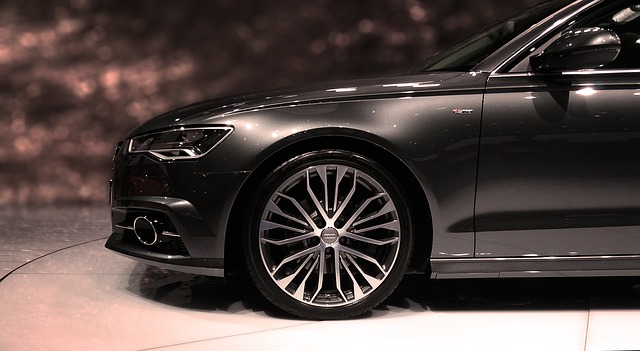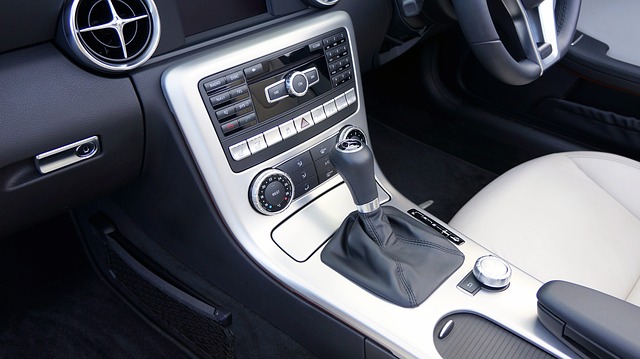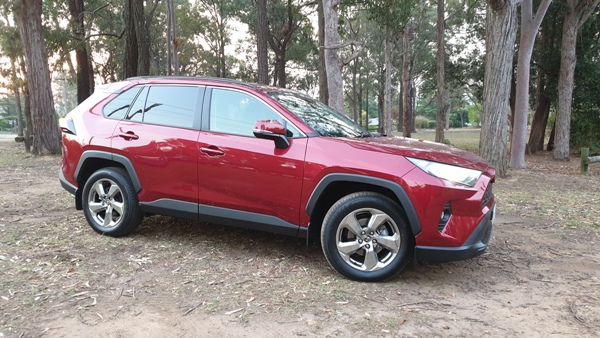Car Sales
What to Consider Before Looking at Ex-Demo Vehicles?
Any time one steps into the market in search of a new car, it would be remiss to think that the best deal is certain to be a new vehicle. In fact, ex-demonstrator cars have a particularly solid reputation when it comes to great value. But if you really want to stretch your money further, it pays to know a little more about the ins and outs of ex-demo vehicles. Let’s take a closer look.
What is an ex-demonstrator car?
An ex-demonstrator car is a vehicle from the dealer’s showroom that has been used as a test car among prospective new car buyers. Beyond that, it may have also been loaned out to a potential customer so they can spend a bit of time familiarising themselves with the vehicle over a weekend before deciding whether it fits their needs or not.
Quite often, manufacturers may agree to assign dealers ex-demonstrator cars from a popular series for their own use. Whatever the case, the allure of an ex-demo car is that it is almost brand new, with less than 5000km on the odometer and generally not more than a couple months old.

What sort of savings can I expect from an ex-demo car?
It’s one of the first things that comes to everyone’s mind when they think of ex-demo cars – big savings! And while that can certainly be the case, the savings on any specific car will depend on a number of factors. Among these, none is more pertinent than the model of the vehicle in question.
Some popular models are earmarked as vehicles that a dealer may want to move on quickly, particularly if they have abundant stock. Furthermore, the price of the vehicle will dictate the extent of any discount that could be offered. There is only so much you can strip away from the retail price before the dealer knows they will have other buyers enter the showroom.
But beyond that, you also need to take into consideration the condition of the car, as well as just how many kilometres it has got through. The idea of being able to save thousands is not out of the question, provided all these factors align favourably for a buyer.

Is there anything to be aware of when buying an ex-demo vehicle?
Whether it be general tips to get ahead, or points to be wary, take heed of these things before you commit to purchase an ex-demonstrator vehicle:
- Ensure that the car’s warranty coverage starts the day you buy the vehicle (e. not before)
- Inspect the vehicle closely for any damage or unreasonable signs of wear – this extends beyond the exterior, as many people will have stepped inside the car
- Buying a car towards the end of its demonstrator period (i.e. 2-3 months) will afford you the best timing to negotiate a lower price
- Once made available, ex-demo cars often sell quite quickly, so have your vehicle finance lined up
- Inspect all paperwork closely to verify that the registration is being transferred as well
Australian Car Sales Continue Downwards Trend.
Australia’s Federal Chamber of Automotive Industries has released the latest sales figures for 2020, and not unexpectedly, it shows that the nation’s new car buying habits are continuing to be affected by the pandemic.
August for this year saw 60,986 new vehicle sales. That’s 24,647 or 28.8% less than August of 2019, and includes one fewer selling day or approximately 831 vehicle sales. or -28.8% on August 2019 (85,633) vehicle sales. August 2020 had one less selling day (25.8) than August 2019 and this resulted in a decrease of 831.5 vehicle sales per day. In the Passenger Vehicle segment, August had a reduction of 11,035 for a 42.8% decrease, whilst the Sports Utility segment went backwards by 6,652 or 17.0% compared to August 2019. This month also marked the first time a Hybrid vehicle saw the number 1 spot, with the Toyota RAV4 topping the charts. Last year’s August figures had 1,049 hybrid SUV sales, with this year notching 4,809 sales. In a Year To Date measurement, it’s 20,566 against just 5,205 for 2019. The PHEV or Plug-in Hybrid EV sector also grew, with 74 in August 2020 against 63 for the corresponding moth last year.
Last year’s August figures had 1,049 hybrid SUV sales, with this year notching 4,809 sales. In a Year To Date measurement, it’s 20,566 against just 5,205 for 2019. The PHEV or Plug-in Hybrid EV sector also grew, with 74 in August 2020 against 63 for the corresponding moth last year.
The RAV4 range dominated sales on its own, with 24,768 sales YTD and 4,825 for August. In second place was Mazda’s CX5, with 13,830 and 1,884 respectively. The RAV4’s increase represents a YTD percentage increase of 140.5 and a monthly percentage increase of 55.4.
For the 4×4 pick-up sector, Ford’s Ranger outsold the Mitsubishi Triton and Toyota HiLux in August. 2,718 were sold, over 1,278 for the Triton and 936 for the Hilux. On a YTD basis the Ranger was barely ahead of the HiLux, with the figures showing 22,923 over 20,263 whilst Triton’s YTD figures were 10,914.
The RAV4 contributed to Toyota topping the sales charts for August, with 12,449 sales. Mazda took the silver on 6,921 sales whilst the Korean duo took it to the wire. Hyundai notched 4,525 sales, Kia with 4,521 sales, and just shaded Mitsubishi with 4,308 sales. In the Small car segment Corolla just edged the i30, with 1,464 over 1,429, with Kia’s Cerato in third on 1,264. There was a surprise in the Light Cars $25K+ segment, with the Chinese owned MG brand selling 654 MG3s, ahead of Kia’s Rio on 445. The Camry absolute blitzed the under $60K medium segment with 910, whilst the Skoda Octavia stole second over the Mazda6, with 182 to 174. For the Large Car segment in both the under and over $70K bracket, Kia’s Stinger swept all before it with 178, triple that of the Mercedes-E-Class on 53. Kia also dominated the People Mover category, with the soon to be updated Carnival seeing 284 sales. Hyundai’s iMax was a distant second at 72. the Sports cars segment had the Mustang continue its winning way in both under and over $80, with 147 new sales, nearly doubling both the Hyundai Veloster (78) and Mercedes-Benz C-Class Coupe/Convertible (75).
For the Large Car segment in both the under and over $70K bracket, Kia’s Stinger swept all before it with 178, triple that of the Mercedes-E-Class on 53. Kia also dominated the People Mover category, with the soon to be updated Carnival seeing 284 sales. Hyundai’s iMax was a distant second at 72. the Sports cars segment had the Mustang continue its winning way in both under and over $80, with 147 new sales, nearly doubling both the Hyundai Veloster (78) and Mercedes-Benz C-Class Coupe/Convertible (75).
Breaking down the Passenger Car segment has Toyota on 2,700, nudging Kia at 2,515. Hyundai took third with 1,776.
What Should I Consider if I Buy a Car Interstate?
In the overwhelming majority of cases, we’re comfortable purchasing a car that we can drive away on the spot. There are undoubted benefits as far as convenience, negotiating power, cost savings and dealing with any issues. However, sometimes a deal may come along that is too hard to pass up. You look closely, but you realise the seller is interstate. What are your options? Is it worth the hassle, or should you consider refocusing your search on something closer to home? Let’s take a look.

Inspection arrangements are more complex
Most car buyers appreciate the peace of mind that comes with inspecting a car in person. The complication of being in a different state however, is obvious enough. If you’re not prepared to head over and inspect the vehicle, then your options are limited. You are also taking a large risk. Avoid this, no matter the cost savings. You may consider the option of engaging a friend, buying agent, or arranging for a third-party inspection service.
Arranging transport is costly
It’s no secret that our capital cities are very far apart. So as far as transporting a car from interstate goes, your expenses are going to add up very quickly. There are dedicated freight companies who can collect and deliver the car, however this service is not cheap. Make sure you obtain several quotes. If you arrange to head interstate and drive the car back, you will need to budget for flight expenses, fuel as well as considerable time and possibly even accommodation. These days you may also engage a third-party driver to courier the car, although this doesn’t always sit comfortably with some car buyers.

Conduct appropriate background checks
Before you pull the trigger and purchase an interstate car, make sure you review the national PPSR registry and records with the roads authority in the state where it is located. You will want to ensure the car is not stolen, written-off or under finance, as well as review its general sales and odometer history. You will need the vehicle identification number (VIN) before you start. Don’t rely on the seller. It’s important that you see this for yourself, or have a trusted contact who can verify the car’s VIN in person.
Registration and insurance processes are different
If the car is already registered, you will not be able to transfer it directly from the existing owner in one state, to your name and address in a different state. Therefore, sellers usually cancel local registration. However, there is a 14 day window after a change in ownership in which any interstate registration must be transferred over if it is not cancelled. If the registration is cancelled, or it is a new car that is unregistered, you may apply for a temporary unregistered vehicle permit to drive the vehicle home. Keep in mind, once you try to register the vehicle in your home state, it must be certified as roadworthy. Each state has different standards regarding this. Insurance matters also differ by state, so it not only pays to check with the relevant roads authority, but your insurer as well.
2021 Kia Carnival Comes Forth.
Kia has unveiled its long awaited fourth generation Carnival. Standing out in a SUV dominated landscape, the new Carnival has been given a handsome looking makeover. Kia’s signature is the “Tiger Nose” grille and this now extends widthwise via the front lights to further dominate the bluff nose. Slimmer headlights incorporate LED Daytime Running Lights at either end. The Carnival will feature a full tail-width light bar, similar to the look as shown on the Korean release Stinger. It loses weight visually for the rear of the Carnival.
Kia’s signature is the “Tiger Nose” grille and this now extends widthwise via the front lights to further dominate the bluff nose. Slimmer headlights incorporate LED Daytime Running Lights at either end. The Carnival will feature a full tail-width light bar, similar to the look as shown on the Korean release Stinger. It loses weight visually for the rear of the Carnival.
Depending on specification, Carnival will have 17, 18, or 19 inch alloys. Eight colours for the skin will be available, and a “floating island” roof is a stand out, thanks to blacked-out A And B pillars, along with the new signature for the C pillar, a fin that abuts the rear of the sliding door.
Kia have shortened the front overhang, and moved the A pillar rearward to give a longer bonnet to the popular people mover. The chin has the familiar black urethane airdam. The chassis is new and provides better interior packaging, enhancing and providing a more useful interior. Kia calls the philosophy “Spatial Talents”, with a futuristic feel including a wider panoramic screen dash and haptic feedback tabs. The drive selector is now at a more “fall to hand” position at the centre console’s base.
The chassis is new and provides better interior packaging, enhancing and providing a more useful interior. Kia calls the philosophy “Spatial Talents”, with a futuristic feel including a wider panoramic screen dash and haptic feedback tabs. The drive selector is now at a more “fall to hand” position at the centre console’s base.
Interior room improves thanks to an increase in the wheelbase, up to 3,090mm. Width is up slightly, by 10mm to 1,995mm. In length, an extra 40mm has been added for a full 5,155mm. This adds 30mm to the rear overhang and increases room for both cargo and third row passengers.
With the middle and rear rows laid flat, cargo is up to a class leading 2,095L. With the third row up there is a huge 627L. Loading items in is now easier with a lip drop of 26mm. For the driver is a 12.3 inch digital display, along with a 12.3 inch infotainment screen. The two are linked by one piece of glass for a seamless, future inspired, look. Voice recognition tech is on-board with both Android Auto and Apple CarPlay. In a market dependent sense, Kia Live will allow for information such as live traffic updates, weather updates, remote destination provision, and potentially even parking information.
For the driver is a 12.3 inch digital display, along with a 12.3 inch infotainment screen. The two are linked by one piece of glass for a seamless, future inspired, look. Voice recognition tech is on-board with both Android Auto and Apple CarPlay. In a market dependent sense, Kia Live will allow for information such as live traffic updates, weather updates, remote destination provision, and potentially even parking information.
An unusual feature is the Rear Passenger View & Talk. This allows the driver to keep their view ahead whilst using a small camera and microphone to check on and converse with the passengers behind them. The rear seat passengers also may be able to operate the infotainment system. The SmartFob provides a higher measure of hands-free operation for the powered sliding doors and tailgate with a presence sensor opening or closing the doors if read for three seconds. A safety feature embedded in the Carnival’s extensive package is SEA, Safe Exit Assistance. Sensors will monitor traffic and stop the sliding doors from opening if traffic is detected. This is aimed at the family users with smaller children eager to disembark. HDA, Highway Driving Assist, is Kia’s Level 2 autonomous driving technology. This brings the Carnival into a different level of safety, with a front view camera and radar reading forward traffic and adjusting braking, acceleration, and steering if required.
The SmartFob provides a higher measure of hands-free operation for the powered sliding doors and tailgate with a presence sensor opening or closing the doors if read for three seconds. A safety feature embedded in the Carnival’s extensive package is SEA, Safe Exit Assistance. Sensors will monitor traffic and stop the sliding doors from opening if traffic is detected. This is aimed at the family users with smaller children eager to disembark. HDA, Highway Driving Assist, is Kia’s Level 2 autonomous driving technology. This brings the Carnival into a different level of safety, with a front view camera and radar reading forward traffic and adjusting braking, acceleration, and steering if required.
A new safety system is Rear Cross-Traffic Collision-Avoidance Assist (RCCA) and this works by automatically braking the Carnival if sensors detect oncoming rear traffic. Other features such as Lane Following Assist (LFA); Highway Driving Assist (HDA); and Surround View Monitor (SVM) will be available on a market dependent basis.
Power will come from either a 216kW/355Nm petrol V6, a 200kW/332Nm petrol V6, or the grungy 2.2L diesel with 148kW and 440Nm. The latter will already be familiar to many, and has also been given a makeover with new injectors, balance shafts, and a different exhaust system for better emissions. Transmissions will be the very good eight speed auto across the board. Underneath are completely revamped front and rear suspension components with a new IRS and a new “skeletal cross member” up front. This provides a better geometry to improve ride and sharpen handling. Liquid filled suspension bushes further improve ride quality. The body is comprised of different styles of steel, adding flexibility where required, strength where required.
No pricing has been as yet released for the Australian market, with sales expected sometime in Q4 of 2020.